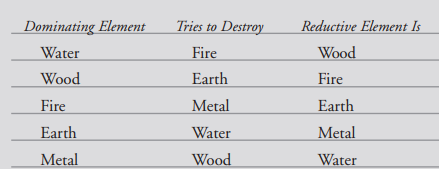
This article has been written especially for my on-line students as they learn about the Five Elements. Sometimes referred to as the “Five Agents” or the “Five Transformations,” the latter descriptions are intentional, so as to move away from a rigid and exclusively literal interpretation of the “elements.” Everything is in flux, from Yin to Yang and also in the manifestations of the Elements.
Each element has a multitude of symbolism associated with it, as well as a multitude of applications, depending on the “platform.” With one easy comparison, the Fire element means something completely different to a doctor of Chinese medicine than it does to a Feng Shui practitioner, or an astrologer or a Nine Star Ki practitioner.
The context in which one uses or refers to the Elements is vital to distinguish. But even within the realm of Feng Shui studies, we can ascribe different interpretations and outcomes to Water, Wood, Fire, Earth and Metal. No element is “good” or “bad” in the same way that no flying star is good or bad. It’s all in context.
For example: each Agent is associated with a literal element, a direction, a family member, numerical coding, parts of the body, a planet or star, seasons of the year, yin or yang dominant, shapes and colors, just to name a few of the associations.
What you want to abandon, the sooner the better, is terminology such as “blue=water” or “a live plant is the wood element” even though I am guilty of “cutting to the chase” and making absolute statements in the interest of saving time. I really had my own mind expanded when I started practicing Nine Star Ki because the palette of information about each element (as stars) far exceeded the associations made just in timely and “untimely” interpretations of the feng shui flying stars.
Equally, any time is a good time to study the I-Ching (aka Yi Jing) as a profound oracle which pairs up the Eight Trigrams into 64 combinations called hexagrams.
The Elements also have a relationship with each other which can be described as Productive (nurturing/strengthening), or Destructive (Controlling or dominating) and Reductive (weakening or diffusing). There is a time and place to use any of these three cycles as a remedial way to balance an area.
For example, if we interpret the flying star calculations for a room where the 7 Metal star is dominating the 4 Wood star, the Reductive cycle might be used to weaken the 7 metal while simultaneously nurturing the 4 wood star. The Reductive cycle is really just another way of looking at the Productive cycle in action.
Author: Kartar Diamond
Company: Feng Shui Solutions ®
From the For My On-line Students Blog Series
